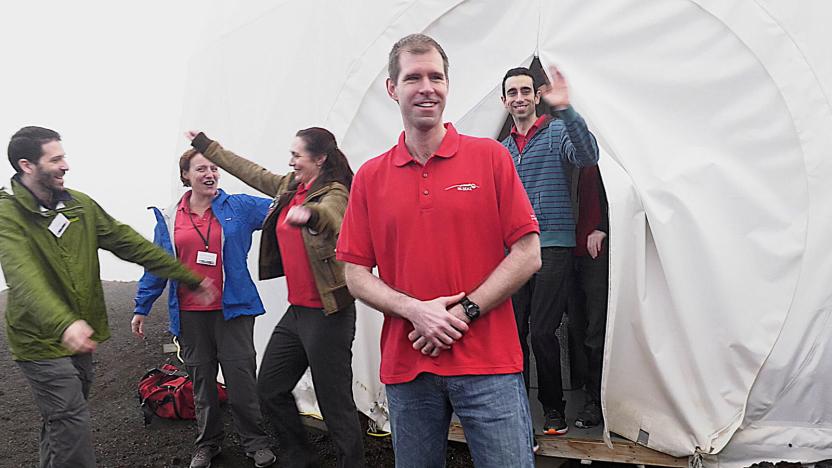hi-seas
Latest

Mars astronauts could use VR to remind them of home
To put it mildly, Mars astronauts are likely to feel isolation on a level that even the most daring space explorers can't understand. How do you feel connected when Earth is just a dot in the sky? NASA, Smart Information Flow Technologies and 8i might help. They're researching the prospect of using virtual and augmented reality experiences to fight the "sensory and social monotony" of a Mars mission. The aim would be to create a library of inspirational messages that remind astronauts why they're on the Red Planet, and connect them to family -- a bit like the video messages in 2001, only more immersive.

Simulated Mars mission ends its year-long experiment
A NASA-backed, year-long simulation of living on Mars has finally come to a close. The six people in the HI-SEAS (Hawaii Space Exploration Analog and Simulation) experiment have left their dome on Mauna Loa to rejoin the rest of society. The test shows that a team can maintain performance, resource gathering and social graces while spending long periods in the relative isolation necessary for a Mars mission, whether it's a temporary stay or a full-fledged colony. For example, the crew demonstrated that you can extract water from ground that appears to be dry -- important when astronauts would likely have to ration water carefully.

NASA simulates Mars mission by locking up people in a tiny dome
A group of six people bade the rest of the world farewell on Friday to begin their year-long stay in a cramped dome on Hawaii's Mauna Loa volcano. The French astrobiologist, German physicist and American pilot, architect, doctor/journalist and soil scientist went on a voluntary isolation to simulate a manned mission to the red planet, which could last from one to three years. The team will have to endure living together in a 36-foot-wide, 20-foot-tall abode called HI-SEAS, short for Hawaii Space Exploration Analog and Simulation. They do have (tiny) rooms of their own with enough space for a sleeping cot and a desk, but they can only go outside if they're wearing a spacesuit. All six also won't have access to comfort food if they're feeling stressed from their living situation: they have to make do with basic food items like canned tuna and powdered cheese.

